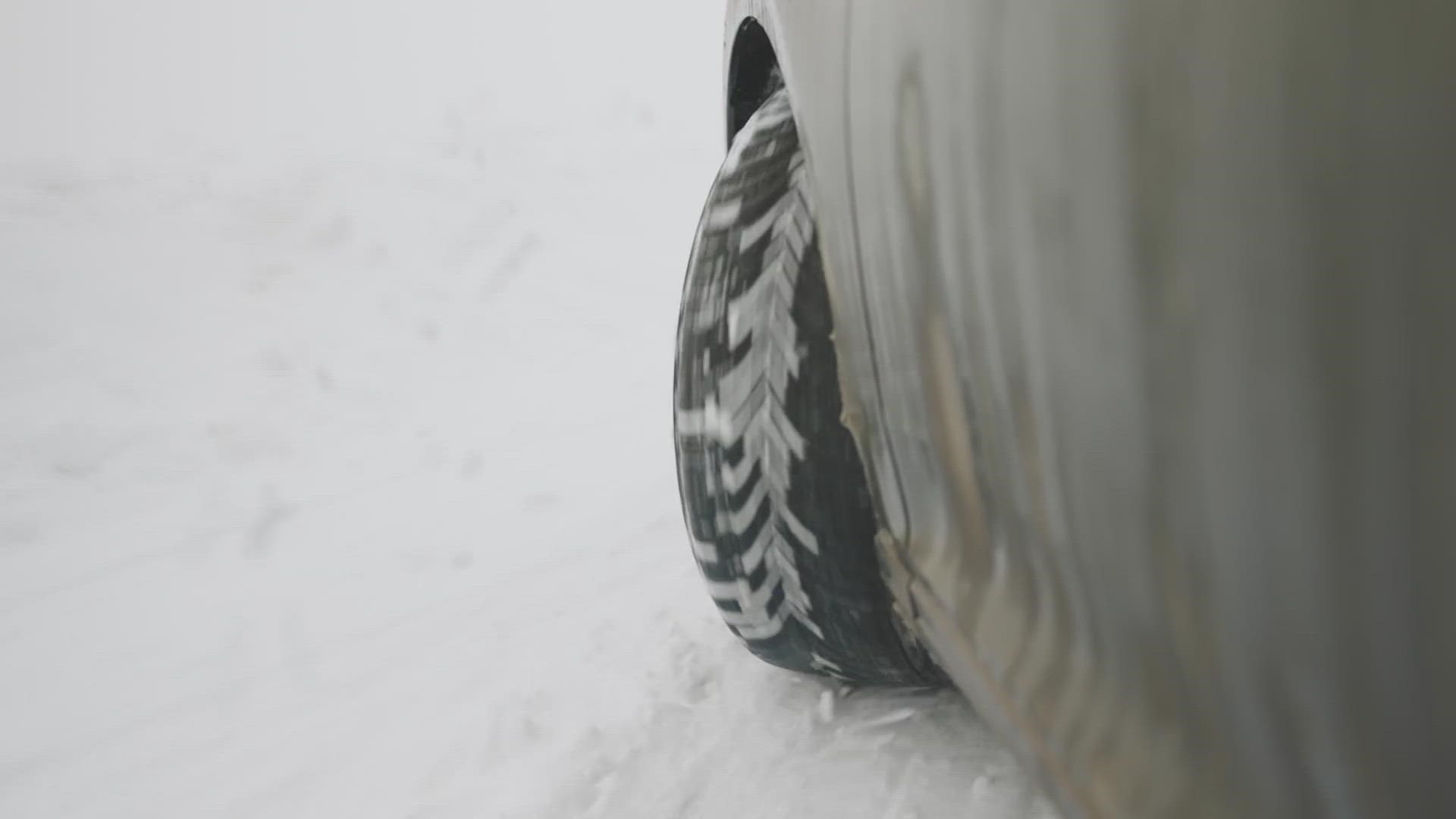SAN ANTONIO — With winter weather bringing icy conditions to roads in the San Antonio area, it's more important than ever for drivers to be careful.
Safe driving begins before you even turn the ignition. First, take a look at your tires.
“Low tire pressure can result in poor handling and braking,” said Daniel Armbruster of Texas AAA. “So you want to just make sure you have enough or the correct amount of pressure. Remember, that cold air can lower the air pressure in a tire, which can make your vehicle harder to control. Healthy tires are critical to maintaining traction on the roadway.”
Pack an emergency kit. It should include:
- an ice scraper
- traction aids like sand or non-clumping cat litter
- a flashlight and extra batteries
- jumper cables
- basic tool kit
- first aid kit
- snacks
- water
- phone charger
- blanket
“If you don’t have power to your vehicle, it’s going to get cold very quickly,” Armbruster said. “Making sure you stay warm and safe in the freezing temperatures is important.”
Next, check your gas gauge.
“Having at least half a tank of gasoline is important not only because it could keep your gas line or help keep your gas line from freezing up, which can be expensive to replace,” Armbruster said. “But also if you’re in an emergency and you do have power, you want to keep that power.”
Plus, clear your windshield.
“You really want to optimize visual clarity, so you want to clean the outside and inside of that windshield,” said Armbruster.
It can be tempting to remove the least amount of ice necessary before driving off, but you need to remove all the ice from the side and rear windows so you can clearly see cars in every direction.
Never use hot water or a metal ice scraper to de-ice your windshield. Instead, turn on your heater and set it to defrost. Adjust the airflow to recirculate and move the temperature control to full heat to avoid damage and repairs to your vehicle.
Turn on your headlights before you put your vehicle in drive.
“When we have days like this where winter weather can make visibility difficult, it’s just better so that everyone sees you and that you’re visible to other drivers on the roadway,” Armbruster said.
Then drive slowly and leave plenty of room between yourself and other cars, at least three times more space than usual.
“One of the most important things to do is just controlling your speed,” Armbruster said. “Most of the crashes we see are drivers just in a hurry, not recognizing the situation and not giving themselves time to react.”
Do not use cruise control on any wet, icy, or snow-covered roads. Be careful on bridges and overpasses, which can freeze sooner than roads.
Brake gently to avoid skidding. Do this if you skid: Continue to look and steer in the direction you want the car to go. Do not brake hard because it will make the vehicle more difficult to control.
“You definitely want to stay calm,” Armbruster said. “Don’t panic. Make sure that steer in the direction you want to go. The biggest thing, though, is not to panic, not to slam on your brakes. That could just further upset the situation.”
Pull over to a safe area if you need to get off the road. Try to get to a parking lot or rest area rather than the shoulder of the road.
Be sure to wash your car after the winter weather if deicing solutions were used on the roads to avoid rusting your brake lines or other parts of your vehicle.

